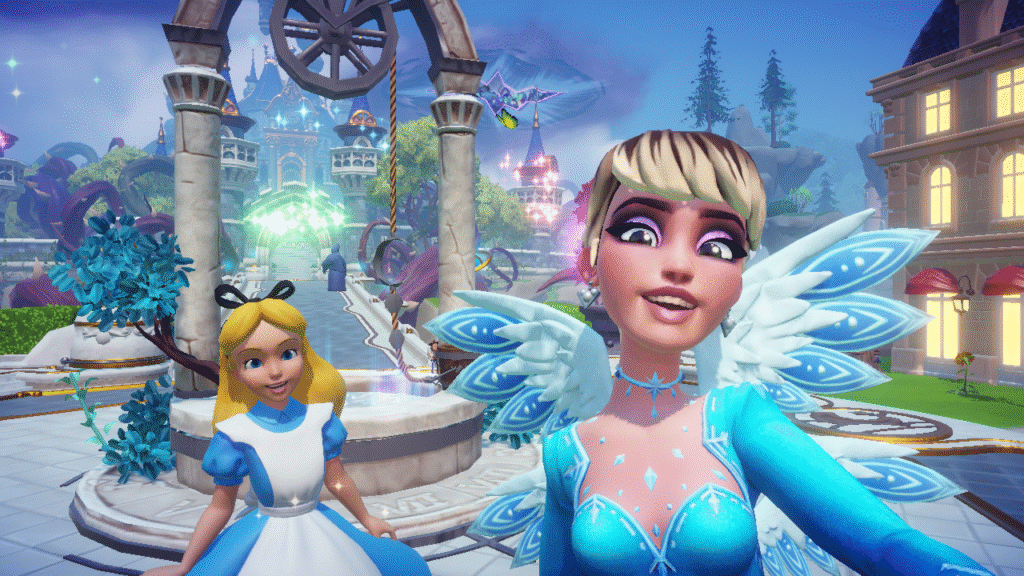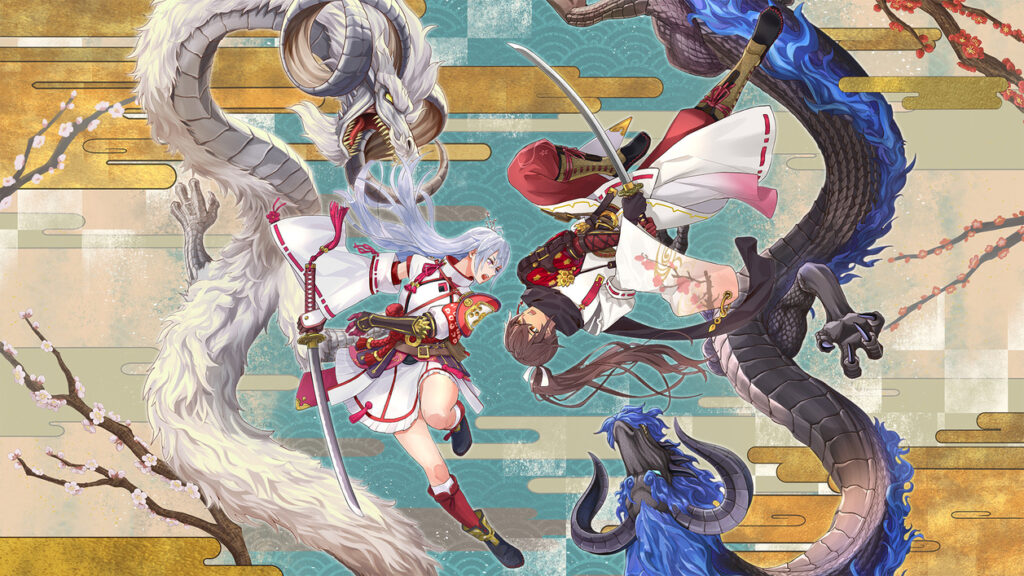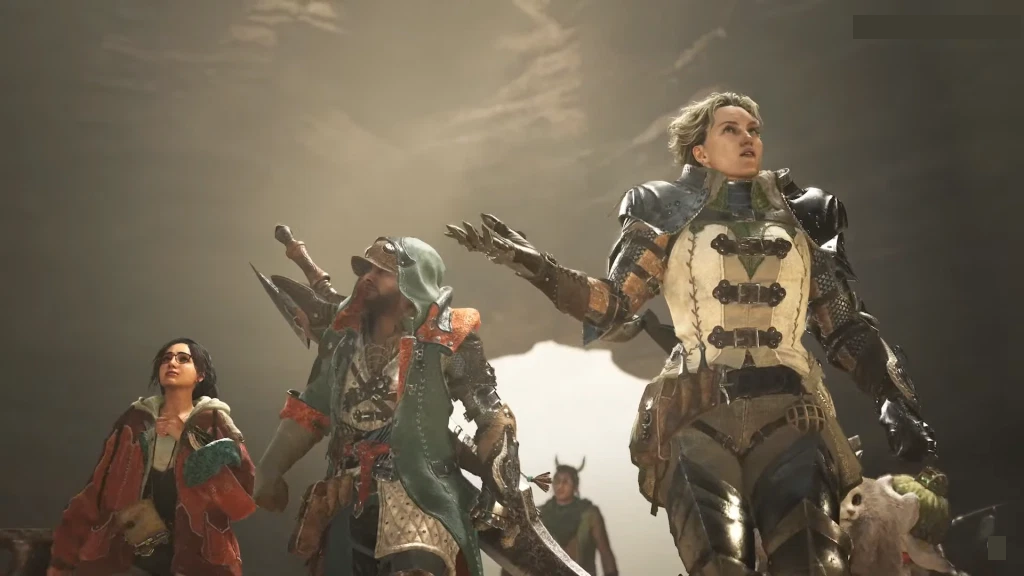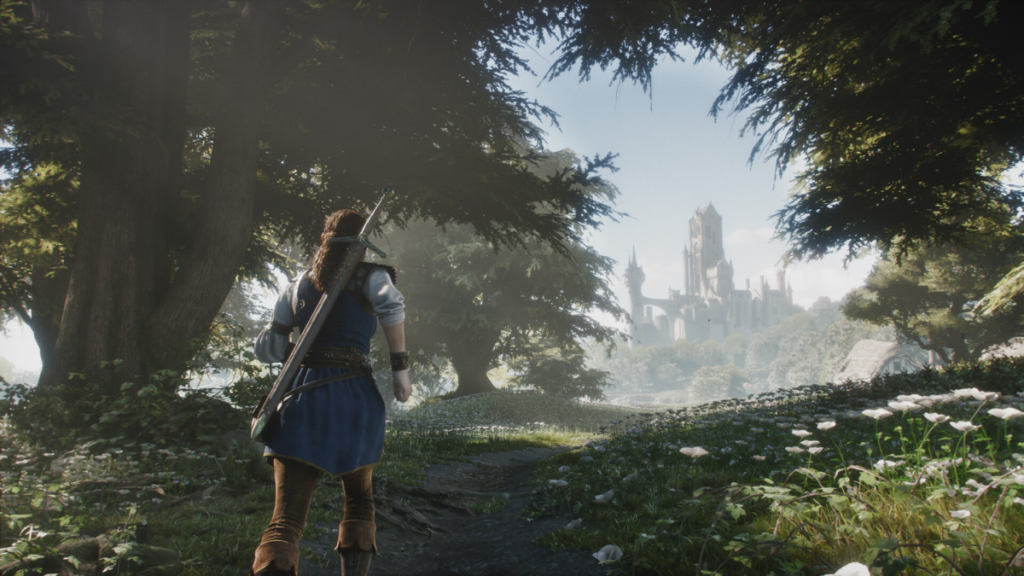Down the Rabbit Hole: My Wonderland Whimsy in Dreamlight Valley’s Update
Tumble Down the Rabbit Hole: My Whimsical Adventure in Dreamlight Valley’s Wonderland Whimsy Update Ever wondered what it’s like to chase a rabbit, get lost in a maze, and befriend a cat who grins like he knows your browser history? Down the rabbit hole we go, welcome to the Wonderland Whimsy update in Disney Dreamlight Valley, where logic takes a tea break and fun runs wild! A Grand Entrance: Wonderland Whimsy Welcome Wagon The moment I unlocked the new Alice in Wonderland Realm, I felt like I’d fallen straight through the looking glass (minus the risk of breaking grandma’s antique mirror). In true Wonderland fashion, this realm isn’t just big-it’s “did I accidentally walk into another game?” big. Every corner is packed with vibrant scenery, quirky puzzles, and just enough playful chaos to make you question if you’ve had too much tea or not enough. Tulgey Wood, the mad tea party, and the Queen’s garden all make appearances, with a twinkle in your eye, each more whimsically detailed than the last. Questing with Curiosities: The Wonders of Wonderland The main questline, aptly named Wonders of Wonderland, is a delightful rollercoaster of objectives. One minute you’re chasing the White Rabbit (who, let’s be honest, could win gold in the Valley Olympics), the next you’re picking up his pocket watch, exploring mysterious forests, and trading banter with Alice and the Cheshire Cat. The Queen’s maze? Equal parts “wow” and “wait, where am I?”-but in the best way possible. Each quest phase feels meaningful, never rushed, and always sprinkled with a dash of Wonderland weirdness. A Story Worth Savoring Unlike some realms that wrap up faster than you can say “off with their heads,” Wonderland’s questline lets you linger. Indeed, the pacing is just right: enough time to savor every oddball encounter and puzzle, but never so long you start talking to your houseplants. By the end, I was genuinely invested in helping Alice and outsmarting the Cheshire Cat-no easy feat, since he’s about as predictable as a squirrel on espresso. New Neighbors: Alice and the Cheshire Cat Bringing Alice into the Valley is a breeze after finishing the realm quests. Her friendship quests add a sprinkle of charm to your daily routine. Just when you thought it couldn’t get quirkier, the Cheshire Cat is a master of dramatic entrances-his arrival is staggered, with more quests and delightful chaos unlocking after May 7th. In the spirit of mischief, it’s like waiting for your favorite dessert: the anticipation only makes it sweeter. Mannequin Madness: Mischief in the Valley Just when you think things can’t get any curiouser, mischievous mannequins start popping up all over the Valley. Scrooge McDuck’s “Mannequin Madness” quest is a hilarious diversion-cleaning up his store and unraveling more of the Cheshire Cat’s antics. These mannequins aren’t just for show; they’re quirky collectibles that tie into the extended quest chain for unlocking the Cheshire Cat fully. With a wink and a nod, who knew window displays could be this dramatic? Garden of Whimsy Star Path: Blooming with Rewards The Garden of Whimsy Star Path event is the perfect companion to the Wonderland update. Duties range from mining and crafting to cooking up a storm, and the rewards are pure magic: a Queen of Hearts outfit, butterfly companion, and enough floral furniture to make your Valley look like a botanical fever dream. Bonus duties add an extra layer of challenge for those who like their gardening with a side of bragging rights. May 7th Complimentary Update: Cheshire Cat Chaos Unleashed On May 7th, the Valley got a little more unpredictable (as if that was possible). The complimentary update unlocked the full Cheshire Cat questline, letting players dive deeper into his signature mischief. The “Cheshire Cat Chaos” event began, unleashing new tasks, more mannequins, and even greater chaos across the Valley. Therefore, if you thought the Cheshire Cat was mysterious before, just wait until you see what he’s got up his stripey sleeves now. Plus, the Uncrafting Station-unlocked through his friendship quests-lets you break down crafted items and reclaim materials, perfect for those of us who regret crafting 47 identical chairs. Quality of Life: Because Even Wonderland Needs a Tune-Up Alongside all the madness, the update brings handy improvements: new photo mode poses, better home renovation layouts, updated surface grids for creative cluttering, and a refreshed main menu. Moreover, a long list of bug fixes means fewer glitches and more giggles. Chasing Teacups: Unlocking Wonderland Whimsy Secret Sips Down the rabbit hole we go to find Wonderland’s secret Garden Teacups! Collect eight special keys hidden around the realm-starting near the Cheshire Cat’s tree-and use them to unlock a magical furniture bag behind a mysterious purple gate. Inside, you’ll find three giant, colorful teacups perfect for your own Mad Tea Party or to sprinkle some Wonderland charm in your garden. With the tip of your hat, this quirky quest is a must for any fan craving a sip of whimsy! Final Thoughts: Why Wonderland Whimsy is a Must-Play Wonderland Whimsy is easily one of Disney Dreamlight Valley’s most ambitious (and most fun) updates yet. With a sprawling new realm, a questline that’s both deep and delightful, and ongoing events like the Garden of Whimsy Star Path, there’s always something new to discover. The staggered release of the Cheshire Cat and his mannequin mayhem keeps the excitement alive, making every day in the Valley feel like a new adventure. So grab your best hat, keep your eyes peeled for grinning cats, and get ready to tumble down the rabbit hole-Wonderland awaits! If you see me wandering the Valley muttering about pocket watches and talking flowers, just know: it’s all part of the whimsy! You can also stay up to date on Disney’s Dreamlight Valley Blog here





